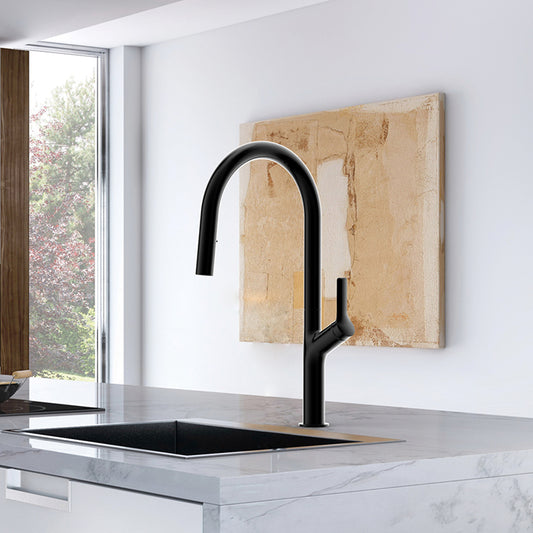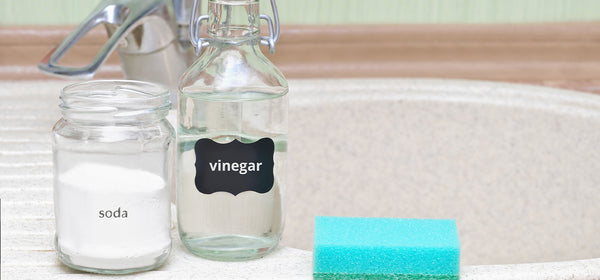How do you Remove Rust from a Tap Quickly: Easy Step -By-Step Guide
Table Of Contents:
-
Introduction
-
Hard Water and Rust
-
How to Remove Rust from Taps
-
Preventing Rust in the Bathroom
-
Regular Cleaning
-
Applying Protective Coatings
-
Bathroom Fixtures Prone to Rust
-
Common bathroom fixtures that may be susceptible to rust include
-
Maintaining Plumbing
-
Additional Tips for Effective Rust Removal and Prevention
-
Use Protective Gloves
-
Ventilation
-
Avoid Abrasive Tools
-
Regular Inspection
-
Stay Eco-Friendly
-
Seek Professional Help
-
Keep Taps Dry
-
Monitor Water Quality
-
Conclusion
Introduction:
Rust can be a persistent and unsightly issue in any bathroom, particularly on your taps.
In this comprehensive guide, we will explore How to remove rust from taps and prevent it from returning.
Say goodbye to those annoying rust stains and hello to shiny, rust-free taps.
Hard Water and Rust
Hard water contains a high mineral content, primarily calcium and magnesium.
When hard water comes into contact with metal surfaces like taps, it can leave behind mineral deposits and accelerate the rusting process.
The result? Those reddish-brown rust stains we all dread.
To combat the effects of hard water, consider installing a water softener.
This device can significantly reduce the mineral content in your water supply, thus decreasing the likelihood of rust formation on your taps and fixtures.
How to Remove Rust from Taps
Now, let's get into the heart of the matter: how to remove rust from your taps. We'll explore three effective methods that have proven to be successful in rust removal. Choose the one that suits you best, or try them all for maximum effectiveness.
1. Using Vinegar
Vinegar is a versatile household item known for its rust-removing properties. Follow these steps to harness the power of vinegar:
Materials Needed: White vinegar, a soft cloth, a toothbrush, and a bowl.Steps:
- Pour white vinegar into a bowl.
- Soak a soft cloth in the vinegar and wrap it around the rusty areas of your taps.
- Let it sit for about an hour, allowing the vinegar to break down the rust.
- Gently scrub the taps with a toothbrush to remove the loosened rust.
- Rinse thoroughly with water and dry with a clean cloth.
2. Lemon and Salt Method
Combining the natural acidity of lemon with the abrasive power of salt can be a game-changer for rust removal. Here's how to effectively use this method:
Materials Needed: Lemon, table salt, a soft cloth, and a toothbrush.
Steps:
- Cut a lemon in half and sprinkle a generous amount of table salt on one of the halves.
- Use the salted lemon half as a scrubber to rub the rusty areas of your taps.
- Squeeze the lemon to release its juice while scrubbing.
- Allow the lemon and salt mixture to sit on the rusted areas for about 30 minutes.
- Use a toothbrush to scrub away any remaining rust.
- Rinse thoroughly with water and dry with a clean cloth.
3. Commercial Rust Removers
In cases where rust proves too stubborn for DIY solutions, commercial rust removers can come to your rescue. Here's how to use them safely and effectively:
Materials Needed: Commercial rust remover, protective gloves, a soft cloth, and water.Steps:
- Put on protective gloves to shield your hands from the chemicals.
- Apply the commercial rust remover as per the manufacturer's instructions.
- Allow it to sit for the recommended duration to dissolve the rust.
- Use a soft cloth or sponge to wipe away the rust and remover residue.
- Rinse the taps thoroughly with water and dry them.
Preventing Rust in the Bathroom
Prevention is the key to ensuring those pesky rust stains don't return to haunt your bathroom fixtures. Here, we'll share practical tips and strategies to help you maintain a rust-free bathroom.
Regular Cleaning
Consistent and proper cleaning is your first line of defense against rust. Follow this cleaning routine to help you maintain your taps and fixtures:
Materials Needed: Mild bathroom cleaner, a soft cloth, and water.
Steps:
-
Begin by turning off the water supply to your taps.
-
Apply a mild bathroom cleaner to a soft cloth.
-
Gently wipe down your taps and fixtures, paying close attention to any areas prone to rust.
-
Use a toothbrush or an old toothbrush to reach tight spots and crevices.
-
Rinse thoroughly with water and dry with a clean, dry cloth.
-
Turn the water supply back on.
Applying Protective Coatings
Protective coatings act as a reliable barrier between your fixtures and moisture, effectively preventing rust from taking hold. To ensure long-lasting protection, here's how to apply these coatings correctly:
Materials Needed: Rust-resistant metal primer, automotive enamel or acrylic/latex metal paint, sandpaper, a dust mask, a wet rag, a liquid metal filler (for cracks or gouges), and car wax (optional).
Steps:
-
Start by turning off the water supply to your taps.
-
Sand your fixtures while wearing a dust mask to protect yourself from chrome dust. Begin with heavy sandpaper and then switch to a finer variety.
-
Wipe down the chrome with a wet rag before starting the primer application.
-
Fill any cracks or deep gouges with a liquid metal filler and let it dry as per the instructions.
-
Apply a rust-resistant metal primer to the chrome.
-
After the primer dries, apply a finish coat using automotive enamel or acrylic/latex metal paint.
-
Optionally, for a quicker way to prevent rust, seal any cracks in fixtures with car wax every month or two.
-
Turn the water supply back on.
Bathroom Fixtures Prone to Rust
Certain bathroom fixtures are more susceptible to rust due to their material and exposure to moisture. Understanding which fixtures are prone to rust can help you take proactive measures to prevent it.
Common bathroom fixtures that may be susceptible to rust include:
1.Faucets:
Taps and faucets made from materials that are not corrosion-resistant can develop rust over time. Opt for fixtures made from rust-resistant materials like stainless steel or chrome-plated brass.
2.Showerheads:
Showerheads are exposed to constant moisture, making them vulnerable to rust. Regular cleaning and proper maintenance can help extend their lifespan.
3.Drain Covers:
Drain covers often accumulate moisture and debris, leading to rust. Consider using rust-resistant drain covers and clean them regularly.
Maintaining Plumbing
Sometimes, rust issues can originate from within your plumbing system. Here are some insights into plumbing maintenance to help you keep rust at bay:
-
Regular Inspection: Periodically inspect your plumbing for any signs of corrosion, leaks, or rust buildup. Address any issues promptly to prevent further damage.
-
Water Softener: Consider installing a water softener to remove iron and other heavy metals from your water. This can significantly reduce the chances of rust forming within your plumbing.
-
Professional Maintenance: Schedule regular maintenance checks with a professional plumber to ensure your plumbing system is in good condition. They can identify and address any rust-related problems efficiently.
Additional Tips for Effective Rust Removal and Prevention
In addition to the methods and strategies mentioned earlier, here are some extra tips to ensure you achieve the best results in removing rust from your taps and preventing its return:
Use Protective Gloves:
When working with rust removal solutions or commercial rust removers, always wear protective gloves to safeguard your skin from any harsh chemicals.
Ventilation:
Ensure proper ventilation in your bathroom when using rust removal products to avoid inhaling fumes. Open windows or turn on exhaust fans.
Avoid Abrasive Tools:
While it may be tempting to use abrasive tools like steel wool, be cautious, as they can scratch the surface of your taps. Opt for softer materials like nylon scrubbers to prevent damage.
Regular Inspection:
Make it a habit to inspect your taps and fixtures regularly for any signs of rust or wear. Catching the issue early can save you time and effort in the long run.
Stay Eco-Friendly:
If you prefer eco-friendly solutions, consider using natural rust removers like citric acid or baking soda. They are safe for both you and the environment.
Seek Professional Help:
In cases of severe rust or plumbing issues, don't hesitate to contact a professional plumber. They can assess and address the problem effectively, ensuring long-term solutions.
Keep Taps Dry:
After using your taps, dry them with a towel to prevent water from sitting on the surface and promoting rust formation.
Monitor Water Quality:
Consider installing a water softener or a filtration system if your water source contains high mineral content. This can significantly reduce the chances of rust formation.
Conclusion
In conclusion, removing rust from taps doesn't have to be a daunting task.
Armed with the right knowledge and techniques, you can restore your taps to their original shine and prevent future rust issues.
Say farewell to rust and hello to a pristine bathroom environment.
How to remove rust from taps is a skill that can keep your bathroom fixtures looking their best for years to come.
Explore our other related blog posts :
How to Remove Limescale Easily - Guaranteed Success


























